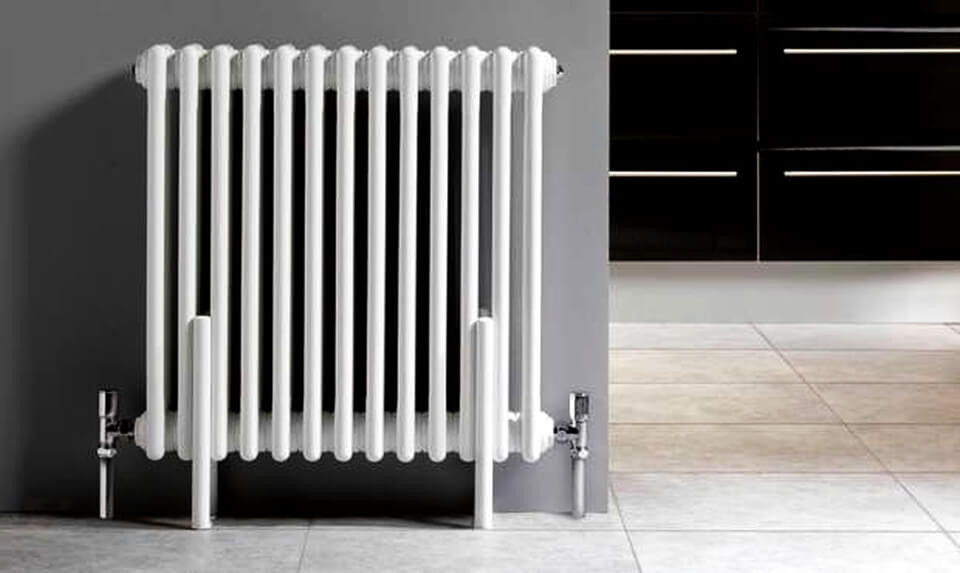Radiators can often be overlooked when it comes to renovation work. It’s natural to just go with the standard white boxy looking styles that fit into most homes. However, if you’re looking for something a little different, there are a range of styles to choose from.
Choosing radiators for your home can be challenging, as not all styles will have the right size and shapes for your space. There is also what type of heating method you have in your home to consider. There are mainly three options to choose from, including:
Electric radiators
This type of radiator is run by electricity. They are filled with a fluid that is heated up by an electrical element. You can have this radiator connected to individual electric supplies or connected to your central home system.
Gas central heating system
Gas central heating is one of the most common heating systems, especially in older homes. A boiler that heats the water runs the system, and this is passed through to your radiators around the house.
Dual fuel heating systems
This type of system can use both gas and electricity to power it. You can heat your home with the electrical input even when the main central heating is switched off. It is often used for heating towel radiators.
Once you have determined what type of radiator system you have, it is now time to select the style you would like in your home. There are several options to choose from, and each has pros and cons depending on your property needs.
Here are the main styles of radiator that could work in your home:
Single panel radiators
For a very basic style, a single panel radiator could be an option. This is a slimline design and consists of one panel that sits against the wall. This could be a good fit for smaller rooms where it will take less to heat the space.
Double panel radiators
This style of radiator is made with two panels and is wider than the single panel design. This style can stick out quite far from the wall, and space would need to be considered for this type of fitting. In some areas, they can work really well, especially if you want to heat a larger room. However, they can cause issues with obstruction if you need to place them near doors or furniture.
Horizontal radiators
Horizontal radiators are one of the most common designs you see in homes. Traditionally they are wider than they are tall and fit into most spaces with ease. They are typically white and provide ample heat for a range of room sizes due to the variety of sizes available. This type of radiator is a safe option for fresh and simple interiors and is less expensive than other designs.
Vertical radiators
In contrast to the horizontal style, this type of radiator is taller than it is wide. This style can add a subtle luxe feel to a room, and there are several designer-style designs to choose from. They can also be a handy space saver. Due to the radiator being higher than eye level, it certainly commands attention in a room. Therefore, be sure you’re happy with this type of focal feature before installing it.
Column radiators
Column radiators are often known for ‘Victorian-esque’ design. They are created with tubes that are arranged in rows and connect at the top and bottom by one singular piece. This style of radiator is ideal for period properties. Plus, they are an excellent option for contemporary interiors that want to add an industrial edge to the design.
Heated towel rails
Towel rails are the perfect option for bathrooms and make the room and your towels super warm and toasty. This design is ideal for the space, as traditional horizontal examples don’t have enough room to hang towels or bathmats. Towel rails usually have a design that allows you to hang several towels as they protrude from the wall slightly. They are often vertical in design, so it creates a space-saving option.
What will your radiator be made of?
Alongside the style of radiator, you also have to consider the material they are made from. There are several options that can work in all types of properties, including:
- Cast iron
- Stainless steel
- Aluminum
Steel is one of the most common materials for radiators, as it is affordable and hard wearing. Stainless steel also doesn’t rust, and you can find a variety of colors available to match your interiors.
When you have considered all these details, there is also installation, valves, and, of course, the total cost to think about. While you can DIY in some instances, installing this type of system will require a professional to ensure everything is running efficiently and providing you optimum heat.
